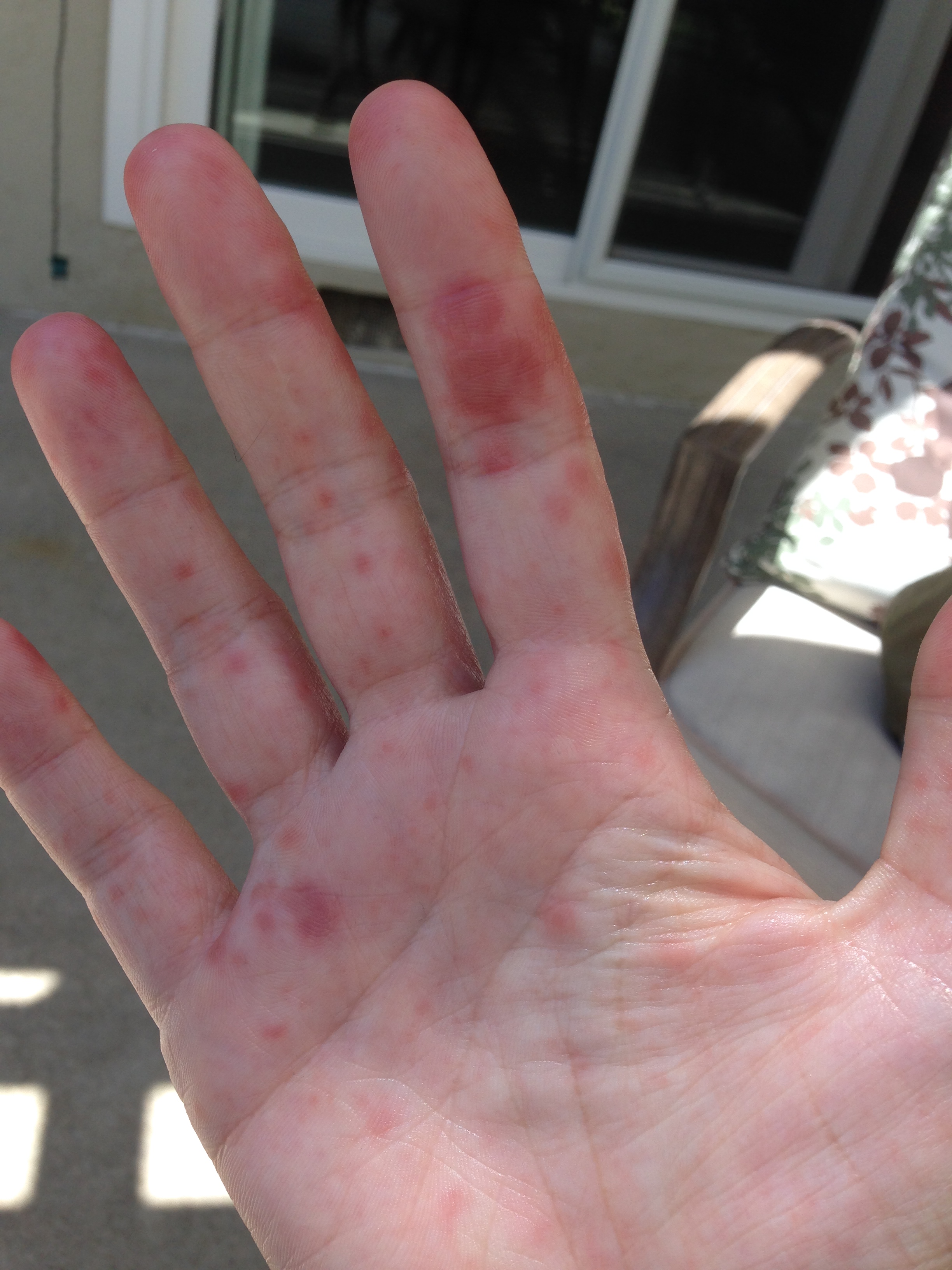
This common illness is caused by a group of viruses known as enteroviruses. The illness occurs most commonly in babies and children under the age of 5, but adults may be affected, too.

These can be painful and make it difficult to eat or drink.
What does hand foot disease look like. Keep blisters or scabs clean and avoid touching them. At the same time or shortly after. If your child is old enough and game, you can see if he will oil pull.
Rashes on a patient's foot, which is one of the symptoms of hand foot and mouth disease. The first signs of hand, foot and mouth disease can be: The characteristic blisters and rashes show up later, usually one.
Hand, foot, and mouth disease, which typically affects young children, is caused by a virus. Hand foot and mouth disease images — codes and concepts. Severe problems may affect your daily activities.
Visit the national agricultural library of the u.s. A child has severe rashes on the face. Most children have a few painful mouth sores, which usually develop on the tongue.
When adults do get symptoms of hfmd, they are the same as those in children. After developing a fever, painful sores may develop in the mouth. Fluid in the blister and the resulting scab that forms as the blister heals may contain the virus that causes hand, foot, and mouth disease.
Painful, red blisters in the mouth. Children are often irritable, tired, and may be off their food. After a few days mouth ulcers and a rash will appear.
Wash your hands after you use the bathroom, change a child's diapers, or sneeze. Sores on the patient's roof of the mouth. Red skin that looks like a sunburn.
Oil pulling is beneficial in two ways. Hand, foot, and mouth disease usually begins with a fever, reduced appetite, sore throat, and feeling lethargic. A fever and sore throat are usually the first symptoms of hand, foot, and mouth disease.
Humans do not get the animal disease, and animals do not get the human disease. The following can help prevent the spread of hfmd: While many people worry that they can get hfmd from a pet or other animal, you cannot.
These spots can blister and become painful. Signs and symptoms may range from mild to severe. A case of severe hand foot and mouth disease in a teenage patient.
Malaise (feeling unwell) painful red blisters in your mouth. First, oil pulling has been proven to reduce the number of bacteria and viruses in the mouth. As its name suggests, hand, foot and mouth disease can affect these three locations on the body and may cause the following symptoms:
These sores, called herpangina, appear as spots — usually in the back of the mouth. A red rash on the hands and the soles of the feet. Ulcers appear in the mouth and on the tongue.
The first symptoms of hand, foot and mouth disease that show up include fever, lack of appetite, sore throat and a runny nose. In hand, foot and mouth disease , coxsackievirus 16 is usually the responsible virus. This common and benign viral disease of childhood is usually caused by the a16 strain of coxsackievirus, although other.
An itchy rash on the hands, feet, or both. Hand foot and mouth disease images. After one or two days, the above symptoms tend to clear and you may see:
Check if it's hand, foot and mouth disease. Swollen lymph nodes in the neck. An itchy rash, usually on the feet, hands, or both.
Both patient's feet have rashes. Wash your hands before you prepare or eat food. This common illness is caused by a group of viruses known as enteroviruses.
These can be painful and make it difficult to eat or drink. Enteroviral vesicular syndrome images, enteroviral images. Symptoms of hand, foot and mouth disease.
Learn more about the causes, risk factors, symptoms, transmission, diagnosis, treatment, prevention. Sores can also appear elsewhere in the mouth, including the roof of the mouth. Second, the oil itself can.
Stay home from work or school while you have a fever or open blisters. The illness occurs most commonly in babies and children under the age of 5, but adults may be affected, too. Fever, sore throat, reduced appetite, and malaise are early.
The rash usually looks like flat, red spots, sometimes with blisters. People usually develop symptoms between 3 to 7 days after being infected. Do not kiss, hug, or share food or drinks.
Hand, foot and mouth disease is a viral infection, which means adults, like children, catch the virus from others.